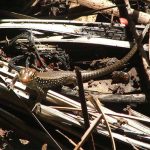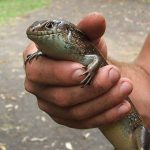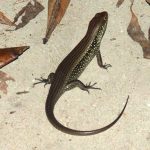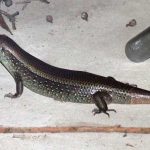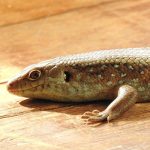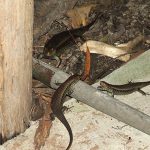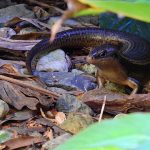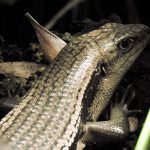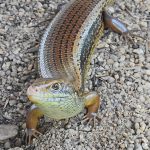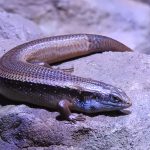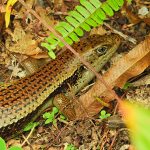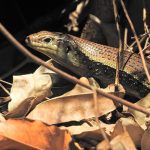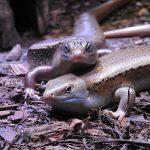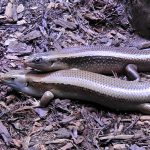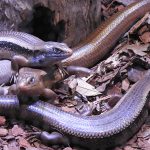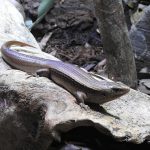Major Skink
The Major Skink is a robust and sizeable lizard, reaching lengths of up to 40 centimetres, including its tail. Its body is adorned with smooth, glossy scales that can range in colour from a rich brown to a deep olive, often with subtle patterns that provide excellent camouflage against the forest floor. The skink’s head is slightly pointed, and its limbs are sturdy, hinting at its agility and strength. These skinks are diurnal, meaning they are active during the day, which is when they hunt for food and bask in the sun to regulate their body temperature.
The Major Skink is predominantly found in the eastern regions of Australia, particularly in Queensland and Northern NSW. It thrives in a variety of habitats, including rainforests, woodlands, and even rocky outcrops. These skinks are well-adapted to their environment, often seen basking in the sun on warm rocks or scuttling through leaf litter in search of food.
While skinks are generally not known for vocalising, they do communicate through body language and behaviours. The Major Skink might use visual displays, such as head bobbing or tail flicking, to communicate with others, especially during mating season or when establishing territory.
The diet of the Major Skink is quite varied. It is an opportunistic feeder, consuming a range of insects, small invertebrates, and occasionally plant matter. This diet helps maintain the ecological balance, as skinks play a role in controlling insect populations.
Breeding typically occurs in the warmer months. Female Major Skinks are oviparous, meaning they lay eggs. A clutch usually consists of several eggs, which are carefully hidden in a secure location. The young skinks hatch fully formed and are independent from birth. In the wild, Major Skinks can live for several years, although their exact lifespan can vary depending on environmental factors.
Predators of the Major Skink include birds of prey, snakes, and larger mammals. Their excellent camouflage and quick reflexes are their primary defenses against these threats. The Major Skink is known for its ability to drop its tail when threatened, a process called autotomy. This distracts predators and allows the skink to escape.
Currently, the Major Skink is not listed as threatened, but like many species, it faces challenges from habitat destruction, predation by feral and domestic cats and dogs as well as climate change. Conservation efforts should focus on responsible pet ownership and preserving their natural habitats, ensuring that these environments remain intact and healthy.
The Major Skink is a splendid example of Australia’s diverse reptilian fauna. Its presence in the ecosystem is a reminder of the intricate web of life that thrives in the Australian wilderness. Through understanding and conservation, we can ensure that creatures like the Major Skink continue to enchant and educate future generations.

